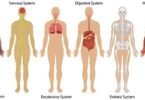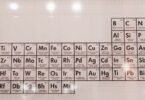Thermodynamics Practice Question / Answers:
Which of the following cylindrical rods will conduct most heat, when their ends are maintained at the same steady temperature?
(a) Length 1 m; radius 1 cm
(b) Length 2 m; radius 1 cm
(c) Length 2 m; radius 2 cm
(d) Length 1 m; radius 2 cm
The value of heat generated when 36.5 gm HCl and 40 gm of NaOH reacts during neutralization
(a) 76.5 kcal
(b) 13.7 kcal
(c) More than 13.7 kcal
(d) 108 kcal
In variable state, the rate of flow of heat is controlled by
(a) Density of material
(b) Specific heat
(c) Thermal conductivity
(d) All the these factors
For cooking the food, which of the following type of utensil is most suitable
(a) High specific heat and low conductivity
(b) Low specific heat and low conductivity
(c) Low specific heat and high conductivity
(d) High specific heat and high conductivity
Related: Introduction to Coordination Chemistry
Snow is more heat insulating than ice, because
(a) Air is filled in porous of snow
(b) Ice is more bad conductor than snow
(c) Air is filled in porous of ice
(d) Density of ice is more
What is the entropy change (in JK–1 mol–1) when one mole of ice is converted into water at 0oC (The enthalpy change for the conversion of ice to liquid water is 6.0 kJ mol–1 at 0o C)
(a) 21.98
(b) 20.13
(c) 2.013
(d) 2.198
The heat content of a system is called
(a) Internal energy
(b) Entropy
(c) Free energy
(d) Enthalpy
The thickness of a metallic plate is 0.4 cm. The temperature between its two surfaces is 20oC. The quantity of heat flowing per second is 50 calories from 5cm2 area. In CGS system, the coefficient of thermal conductivity will be
(a) 0.4
(b) 0.6
(c) 0.2
(d) 0.5
Related: Ionic Equilibrium Practice Questions
In Searle’s method for finding conductivity of metals, the temperature gradient along the bar
(a) Is greater nearer the hot end
(b) Is greater nearer to the cold end
(c) Is the same at all points along the bar
(d) Increases as we go from hot end to cold end
The temperature gradient in a rod of 0.5 m long is 80°C/m. If the temperature of hotter end of the rod is 30°C/m, then the temperature of the cooler end is
(a) 40°C
(b) -10°C
(c) 10°C
(d) 0°C
A slab consists of two parallel layers of copper and brass of the same thickness and having thermal conductivities in the ratio 1 : 4. If the free face of brass is at 100oC and that of copper at 0oC, the temperature of interface is
(a) 80°C
(b) 20°C
(c) 60°C
(d) 40°C
Two mole of an ideal gas is expanded isothermally and reversibly from 1 litre ot 10 litre at 300 K. The enthalpy change (in kJ) for the process is
(a) 11.4 kJ
(b) –11.4 kJ
(c) 0 kJ
(d) 4.8 kJ
Related: Questions on Hydrogen Compounds and Uses
The length of the two rods made up of the same metal and having the same area of cross-section are 0.6 m and 0.8 m respectively. The temperature between the ends of first rod is 90oC and 60oC and that for the other rod is 150 and 110oC. For which rod the rate of conduction will be greater
(a) First
(b) Second
(c) Same for both
The ratio of thermal conductivity of two rods of different material is 5 : 4. The two rods of same area of cross-section and same thermal resistance will have the lengths in the ratio
(a) 4 : 5
(b) 9 : 1
(c) 5 : 4
(d) 1 : 9
When two ends of a rod wrapped with cotton are maintained at different temperatures and after some time every point of the rod attains a constant temperature, then
(a) Conduction of heat at different points of the rod stops because the temperature is not increasing
(b) Rod is bad conductor of heat
(c) Heat is being radiated from each point of the rod
(d) Each point of the rod is giving heat to its neighbour at the same rate at which it is receiving heat
The coefficient of thermal conductivity depends upon
(a) Temperature difference of two surfaces
(b) Area of the plate
(c) Thickness of the plate
(d) Material of the plate
Related: Solid State Questions (Chemistry)
When a gas undergoes adiabatic expansion, it gets cooled due to loss of kinetic energy
(a) Loos of kinetic energy
(b) Fall in temperature
(c) Decrease in velocity
(d) Energy used in doing work
A piece of glass is heated to a high temperature and then allowed to cool. If it cracks, a probable reason for this is the following property of glass
(a) Low thermal conductivity
(b) High thermal conductivity
(c) High specific heat
(d) High melting point
Two rectangular blocks A and B of different metals have same length and same area of crosssection. They are kept in such a way that their cross-sectional area touch each other. The temperature at one end of A is 100°C and that of B at the other end is 0°C. If the ratio of their thermal conductivity is 1 : 3, then under steady state, the temperature of the junction in contact will be
(a) 25°C
(b) 50°C
(c) 75°C
(d) 100°C
In an adiabatic process 90J of work is done on the gas. The change in internal energy of the gas is
(a) – 90 J
(b) +90 J
(c) 0 J
(d) Depends on initial temperature
Related: Chemical Kinetics Examples Questions
The heat is flowing through two cylindrical rods of same material. The diameters of the rods are in the ratio 1 : 2 and their lengths are in the ratio 2 : 1. If the temperature difference between their ends is the same, the ratio of rate of flow of heat through them will be
(a) 2 : 1
(b) 1 : 1
(c) 1 : 4
(d) 1 : 8
A gas expands with temperature according to the relation V = KT2/3 What is the work done when the temperature changes by 30oC
(a) 10 R
(b) 20 R
(c) 30 R
(d) 40 R
Under steady state, the temperature of a body
(a) Increases with time
(b) Decreases with time
(c) Does not change with time and is same at all the points of the body
(d) Does not change with time but is different at different points of the body
Related: the endocrine system quiz answers
The internal energy of an ideal gas increases during an isothermal process when the gas is
(a) Expanded by adding more heat to it
(b) Expanded by adding more molecules to it
(c) Expanded against zero pressure
(d) Compressed by doing work on it
Two vessels of different materials are similar in size in every respect. The same quantity of ice filled in them gets melted in 20 minutes and 30 minutes. The ratio of their thermal conductivities will be
(a) 1.5
(b) 1
(c) 2/3
(d) 4
In a thermodynamic process pressure of a fixed mass of a gas is changed in such a manner that the gas releases 30 joules of heat and 10 joules of work was done on the gas. If the initial internal energy of the gas was 30 joules, then the final internal energy will be
(a) 2 J
(b) – 18 J
(c) 10 J
(d) 58 J
In the case of diatomic gas, the heat given at constant pressure is that part of energy which is used for the expansion of gas, is
(a) 2/5
(b) 3/7
(c) 2/7
(d) 5/7
Related: Nuclear Chemistry Practice Test
Mass and energy are conserved is demonstrated by
(a) First law of thermodynamics
(b) Law of conservation of energy
(c) Law of conservation of mass
(d) Modified form of Ist law of thermodynamics
Heat exchanged in a chemical reaction at constant temperature and constant pressure is called as
(a) Internal energy
(b) Enthalpy
(c) Entropy
(d) Free energy
In which case the thermal conductivity increases from left to right
(a) Al, Cu, Ag
(b) Ag, Cu, Al
(c) Cu, Ag, Al
(d) Al, Ag, Cu






